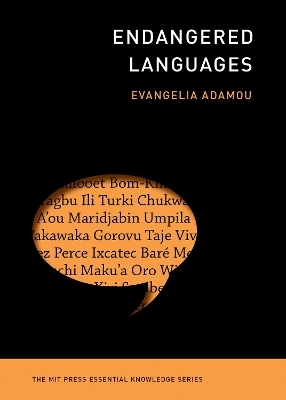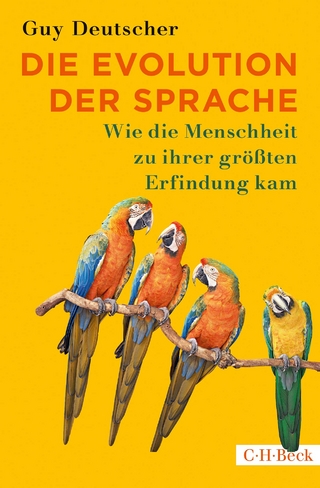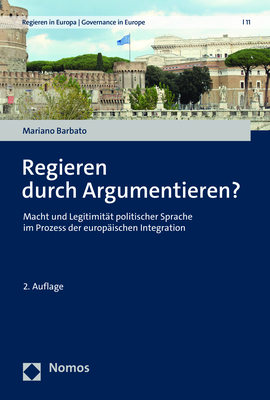
Endangered Languages
MIT Press (Verlag)
978-0-262-54870-0 (ISBN)
58% of the world’s languages—or, approximately 4,000 languages—are endangered. When we break this figure down, we realize that roughly ten percent of languages have fewer than ten language keepers. And, if one language stops being used every three months, this means that in the next 100 years, if we do nothing, 400 more languages will become dormant. In Endangered Languages, Evangelia Adamou, a specialist of endangered languages and a learner of her own community language, Nashta, offers a sobering look at language endangerment and what is truly lost when a language disappears from usage.
Combining recent advances from the Western scientific tradition—from the fields of linguistics, psycholinguistics, neurolinguistics, language attrition, population genetics, and natural language processing—and insights from Indigenous epistemology, theory, and ethics, Adamou examines a wealth of issues surrounding endangered languages. She discusses where endangered languages are found, including how they are faring in a digital world, why these languages are no longer used, and how communities can reclaim languages and keep them strong. Adamou also explains the impact of language continuity on community and individual health and well-being, the importance of language transmission in cultural transmission, and why language rights are essentially human rights.
Drawing on varied examples from the Wampanoag Nation to Wales, Endangered Languages offers a powerful reminder of the crucial role every language has in the vitality and well-being of individuals, communities, and our world.
Evangelia Adamou is Senior Researcher at the CNRS (French National Center for Scientific Research) and a member of the Academy of Europe. She is the author of The Adaptive Bilingual Mind, A Corpus-Driven Approach to Language Contact, and other books.
Contents
Preface
Writing conventions
Chapter 1. Introduction: What we mean when we talk about endangered languages
Chapter 2. Where are endangered languages found?
Africa, Eurasia, Australia, Oceania, North America and Mesoamerica, South America
Chapter 3. When is a language no longer used by a community?
Chapter 4. Why does it matter if a language is no longer used?
Chapter 5. How do communities and governments support endangered languages?
Chapter 6. When linguists and language practitioners study endangered languages
Chapter 7. Endangered languages in a digital world
Chapter 8. Multilingualism as resolution
Conclusion: Tips to promote language diversity
Acknowledgments
Glossary
Further reading
Index
Author bio
| Erscheinungsdatum | 26.07.2024 |
|---|---|
| Zusatzinfo | 3 BLACK AND WHITE ILLUS. |
| Sprache | englisch |
| Maße | 127 x 178 mm |
| Themenwelt | Schulbuch / Wörterbuch ► Wörterbuch / Fremdsprachen |
| Geisteswissenschaften ► Philosophie ► Sprachphilosophie | |
| Geisteswissenschaften ► Sprach- / Literaturwissenschaft ► Sprachwissenschaft | |
| Sozialwissenschaften ► Ethnologie | |
| Sozialwissenschaften ► Soziologie | |
| ISBN-10 | 0-262-54870-4 / 0262548704 |
| ISBN-13 | 978-0-262-54870-0 / 9780262548700 |
| Zustand | Neuware |
| Haben Sie eine Frage zum Produkt? |
aus dem Bereich


